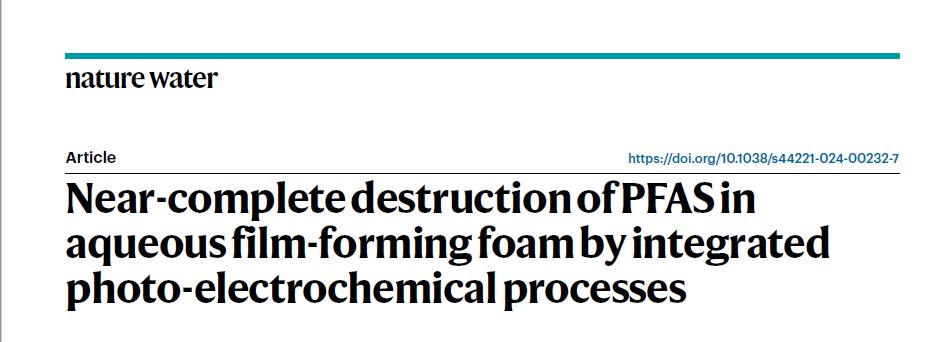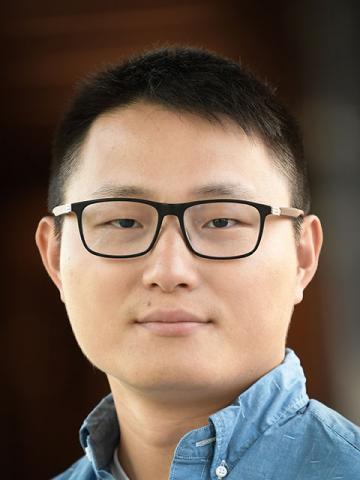
Yang Yang, an Assistant Professor of Civil and Environmental Engineering at Clarkson University, recently published a research article in Nature Water, a sister journal of Nature with a specific focus on water sustainability.

A research team led by Yang developed an innovative non-thermal, cost-effective method called the ultraviolet/sulfite–electrochemical oxidation (UV/S–EO) process. This technology successfully achieves near-complete defluorination and mineralization of PFAS in various types of wastewater, including fire fighting equipment cleaning water, groundwater, and reverse osmosis concentrate, impacted by PFAS-containing aqueous film-foaming foam (AFFF).
Finding a non-thermal method is critical because AFFF disposal by incineration is facing many challenges, according to Yang. The U.S. Department of Defense issued a temporary ban on incinerating PFAS-laden items, with particular emphasis on AFFF, starting April 26, 2022. While the moratorium was lifted on July 11, 2023, there is still uncertainty about available qualified incineration facilities.
“A breakthrough in treatment technology that can be operated at room temperature and ambient pressure is desperately needed,” Yang said.
AFFF used for firefighting is a major source of PFAS pollution. However, complete defluorination (cleaving all C–F bonds into F− ions) of PFAS by non-thermal technology is rare. The destruction of the PFAS mixture in the complex organic matrix of AFFF is even more challenging. The Yang group designed and demonstrated a UV/S–EO process.
The tandem UV/S–EO leverages the complementary advantages of UV/S and EO modules in the PFAS transformation mechanism and the engineering process design. At ambient temperature and pressure, the UV/S–EO realized near-complete defluorination and mineralization of most PFAS and organics in AFFF. This process creates complete cleavage of all carbon-fluorine bonds on PFAS to produce fluoride anions as harmless end products.
This work highlights the integration of molecular-level insight and engineering design toward solving the major challenges of AFFF water pollution.
“The system can be used as a solution to various problems, including but not limited to the treatment of AFFF-impacted surface water, groundwater, and reversed osmosis concentrate,” Yang said. “All reactor components are commercially viable at full-scale. The integration only requires conveying the treated effluents without retrofitting the reaction units. Short for long, we provide an immediate technical solution to the public and practitioners.”
This article was published in the latest issue of Nature Water. It was prominently featured in the News & Views column of the journal.
Student Yunqiao Guan, a Civil and Environmental Engineering PhD student is the first-authors of this article. Professor Jinyong Liu from the University of California, Riverside, is the co-corresponding author. PFAS analytical support was provided by Dr. Sujan Fernando, Professor Thomas Holsen, and the CAARES team.
To read the paper, visit https://rdcu.be/dGoLx.